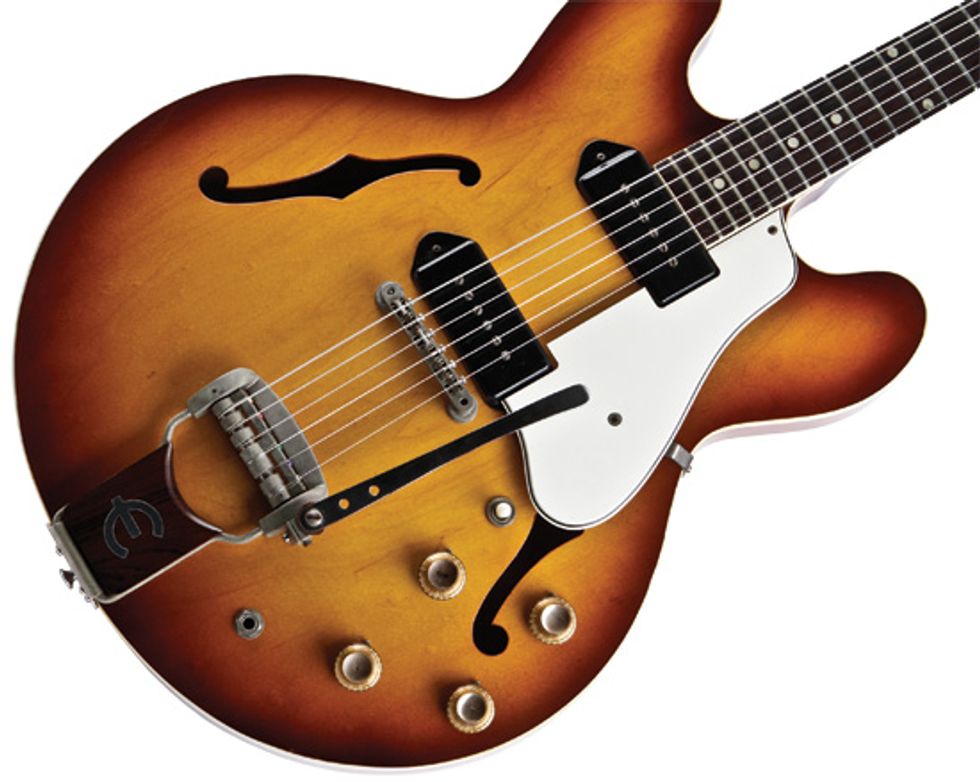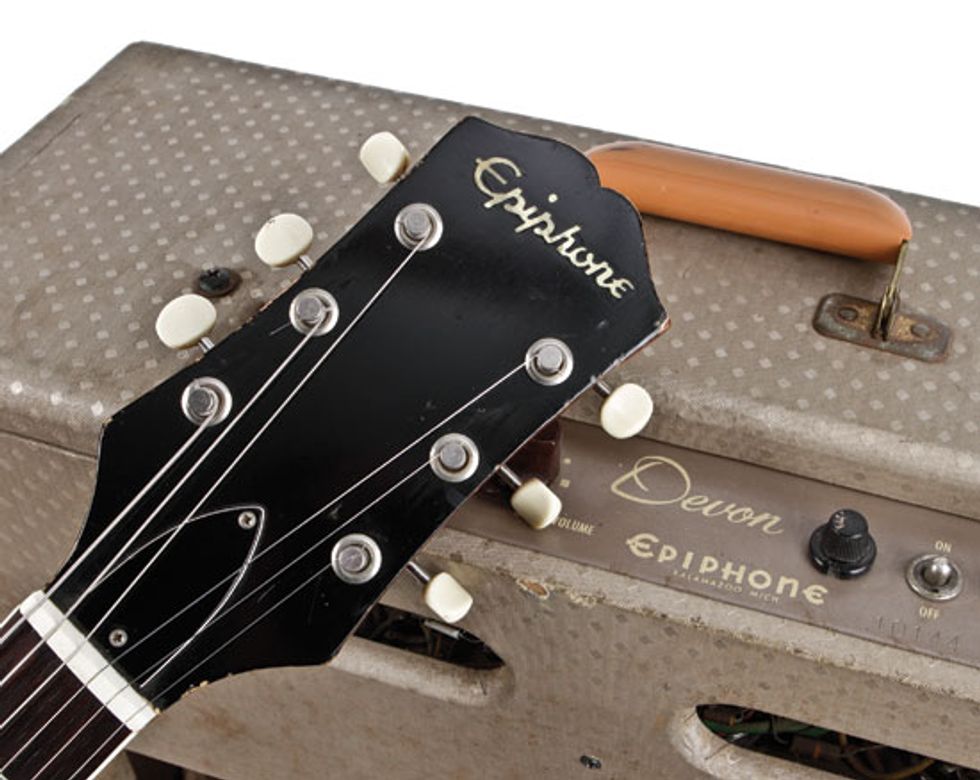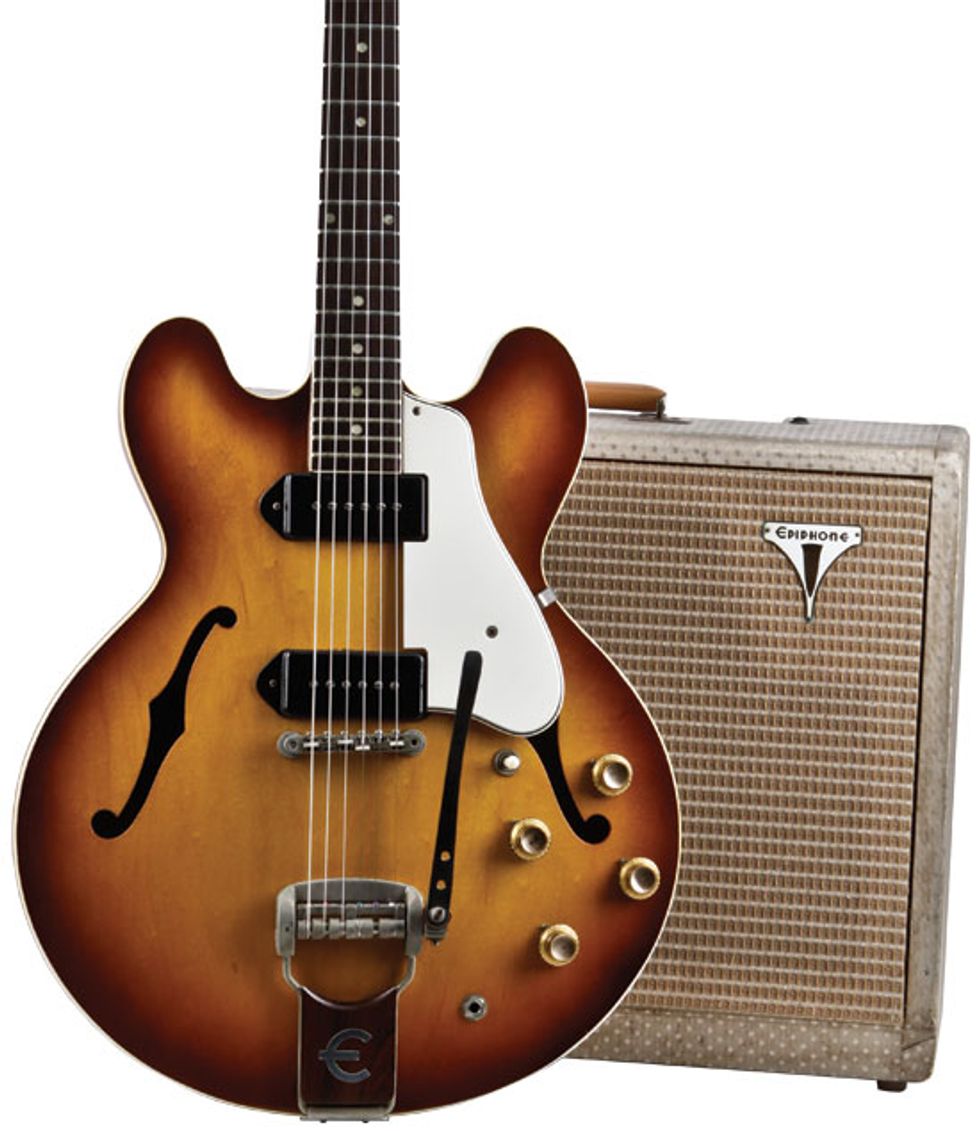In 1957, Gibson purchased Epiphone, its major rival of the 1920s and ’30s. Production of new Epiphones began in 1958 in Kalamazoo, Michigan—home to Gibson at the time—using a few parts left over from the old Epiphone factory. (Most Epiphone parts had been destroyed in a suspicious fire.)
Familiar model names were used on many guitars in the new line including Triumph, Deluxe, Zenith, and Emperor. The electric thinline guitars (except the Emperor) had new names like the Sheraton (introduced in 1958) and the Casino (introduced in 1961).
The Casino was meant to be a counterpart to the Gibson ES-330 (which made its debut in 1959), and was nearly identical in every way except its cosmetic appearance. The Casino, like the ES-330, was fully hollow without a solid block running down the center of the body, as on the ES-335 and Epi Sheraton. The absence of the maple center block required that the neck join the body at the 16th fret, rather than the 19th.
The early Royal Tan Epiphone Casino pictured this month has features that distinguish it from later models. The headstock, like on all of the earliest Casinos, appears a little wider than a typical Gibson headstock with slightly different top curves. By 1963, it had become more elongated and narrower by the D- and B-string tuners. The dot fingerboard inlays on this early version would change to a wider parallelogram shape by ’62. The black plastic P-90 pickup covers were changed to metal covers by ’63. The 3-ply, white-black-white pickguard remained standard until the end of the model’s original run in 1970.
The original price for an Epiphone Casino E230TD in 1961 was $314.50, plus $50 for a case. The guitar’s current market value is about $4,500.
Our featured Casino rests on a 1959 Epiphone Model EA-35 Devon combo amp. The name Devon had previously been used for a budget Epiphone archtop before the Gibson buyout. The original information sheet included in the back of the amp reads: Its unbelievable value includes top mounted, four-tube chassis; top mounted control panel; 9 watts output, two instrument inputs; Jensen 10" speaker, volume control, on-off switch, jeweled pilot light, protective fuse. Large professional size 20" wide, 16" high, 9" deep; weight 20 lbs. The Devon’s original price was $95, and its current value is $500.
Like its counterpart, the ES-330, the Casino has a thin, yet completely hollow body.
The 9-watt Devon sports a 10" Jensen speaker and a single volume control.
A toneful pair: Our ’61 Casino lounges against a 1959 Epiphone Model EA-35 Devon combo.
Sources for this article include Epiphone: The Complete History by Walter Carter, Gibson Electrics—The Classic Years by A.R. Duchossoir, and The Gibson 335: Its History and Its Players by Adrian Ingram.
Original price: $314.50 plus $50 for
hardshell case in 1961
Current estimated market value: $4,500
Dave’s Guitar Shop
Dave Rogers’ collection is tended by Laun Braithwaite and Tim Mullally and is on display at:
Dave’s Guitar Shop
1227 Third Street South
La Crosse, WI 54601
davesguitar.com
Photos by Mullally and text by Braithwaite.










![Rig Rundown: Russian Circles’ Mike Sullivan [2025]](https://www.premierguitar.com/media-library/youtube.jpg?id=62303631&width=1245&height=700&quality=70&coordinates=0%2C0%2C0%2C0)

















